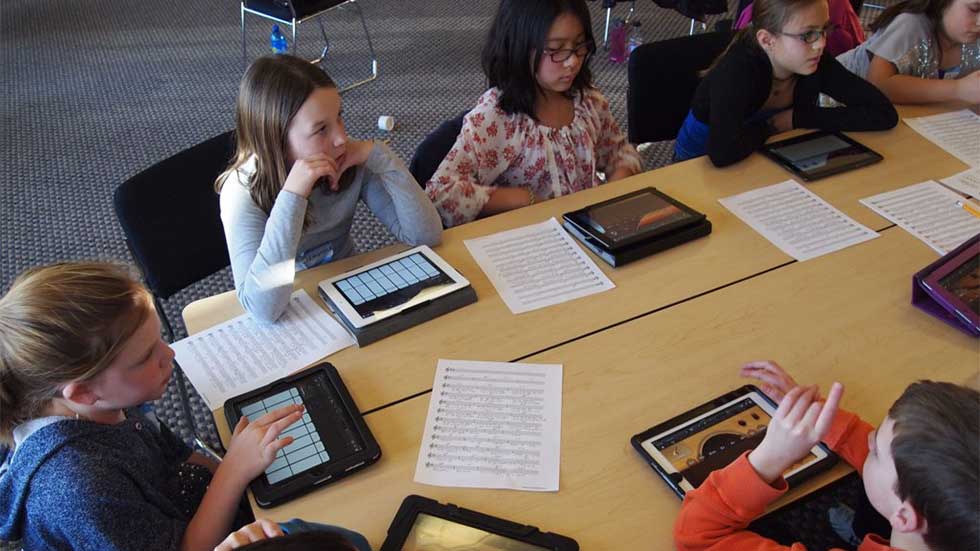“Digital literacies are not solely about technical proficiency but about the issues, norms, and habits of mind surrounding technologies used for a particular purpose.” —Doug Belshaw, Educational Researcher
Digital Literacy, the term in itself speaks of being a literate in digital technology. The core idea is that a person using digital technology or more specifically web technologies must be aware of the right way to use it. The abundance of resources, apps, platforms and other services makes it easy for anyone to fall prey to the ill effects of the web. Being a digital literate helps one to identify and avoid such practices which are not ethical.
With integration of the same in education hence, classrooms educators have come upfront and taken the responsibility to help student become the digital literate/ digital citizens. Digital literacy in the classroom is one important to be addressed because a lot of learning happens at schools and students are doing most of their work online so it’s important to teach them about the ethical use of web. Teaching Digital Literacy in classroom is crucial as this is one of the most important skills that educators must foster and encourage in the classrooms. Also, for better implementation administrators must support it in the broader curriculum so that students can be responsible digital literates.
Considering the essential elements of digital literacies namely, Cultural, Cognitive, Constructive, Communicative, Confident, Creative, Critical, and Civic; I’ve jotted down the following pointers that educators would like to consider before planning on to teaching digital literacy in classroom.
Check’em out:
1. Teach students to evaluate and question their sources. Students need to know the difference between a trustworthy and untrustworthy source. With availability of sources in abundance, it is important that students are being able to compare and evaluate the sources that are being used by them. Ask them to question themselves the following question before making the final pick.
Is their source an academic website or a marketing company?
– When the source was last updated?
– How many other sites link to this source as a reference?
– Is the information presented in objective or biased language?
2. Teach students how to draw a strong conclusion. Students will find the right answer to a problem, but what use is that search if they’ve only memorized the logic to get them there? It’s up to teachers to teach that logic and to contextualize the answer.
3. Push students to new levels of creativity. Once students have a deeper understanding of the answers they’ve found, push for creative application of that knowledge. This could be anything from challenging students to pose related questions to having students use other digital platforms to create something new.
4. Again, digital literacy does not mean knowing how to use every piece of software students will encounter. Teachers should encourage students to seek out and learn the software they need to know in order to do what’s required.
5. In a culture where students are constantly sharing content, they may not know what plagiarism is, let alone when they’re doing it. Teachers should set clear anti-plagiarism policies at the beginning of each year. Explain students about the Academic Plagiarism and explain them their limitations.
6. Cyberbullying is bullying that takes place through the use of electronic technology, and is a pervasive issue in schools and online communities. This is one of the biggest concerns of living ion this online era. And while today’s students may be digital natives, they still need to be taught that social norms apply to online behavior. Resources should be in place to prevent cyber bullying and to help students who are being bullied. Being a good citizen of the digital world is no different than the physical world. There are practical strategies that revolve around proper netiquette and an understanding of the culture that permeates a vast, anonymous, Wild West-like territory often defined by the accountability of those who visit it.
7. Speak to your students about the following:
– Cyber bullying.
– Legality of online material.
– Buying stuff online.
– Digital Footprints.
– Privacy and safety while traveling the digital world.
8. Train students to react skeptically; especially when they read the phrase, “Research says…” or “A recent study revealed…” with data obsession people are quick to believe dramatic figures when they see them. Be sure that whoever claims to back your facts is a credible source, and that the facts themselves are not skewed to manipulate your perspective.
9. Read past the first page of Google results. SEO controls a lot of what shows up on the first page. Most of us have the patience only to scan what shows up on the first page. Teach your students to delve deeper, search in different channels such as Scholar and News, and keep it going until information no longer seems relevant to the topic.
10. Be sure they evaluate two, if not three, competing sources before drawing a conclusion. The best research approaches a topic from as many angles as possible. If you’re crafting an argument, search for facts that may prove your theory wrong. If you’re looking for supporting evidence, be sure it comes from a diverse selection of sources.
Resources That You Must Check:
knowing the Difference Between Digital Skills and Digital Literacies, and Teaching Both
What Every Teacher Needs to Know About Digital Literacy
Checklist: Skills and Tools for Digitally-Literate Teachers
Bringing Digital Literacy to the Classroom
The 7 Coolest Things Digitally Literate Teachers Are Doing in Their Classrooms
20 ways of thinking about digital literacy in higher education
How to Infuse Digital Literacy Throughout the Curriculum
Share your thoughts in the comment section below.
